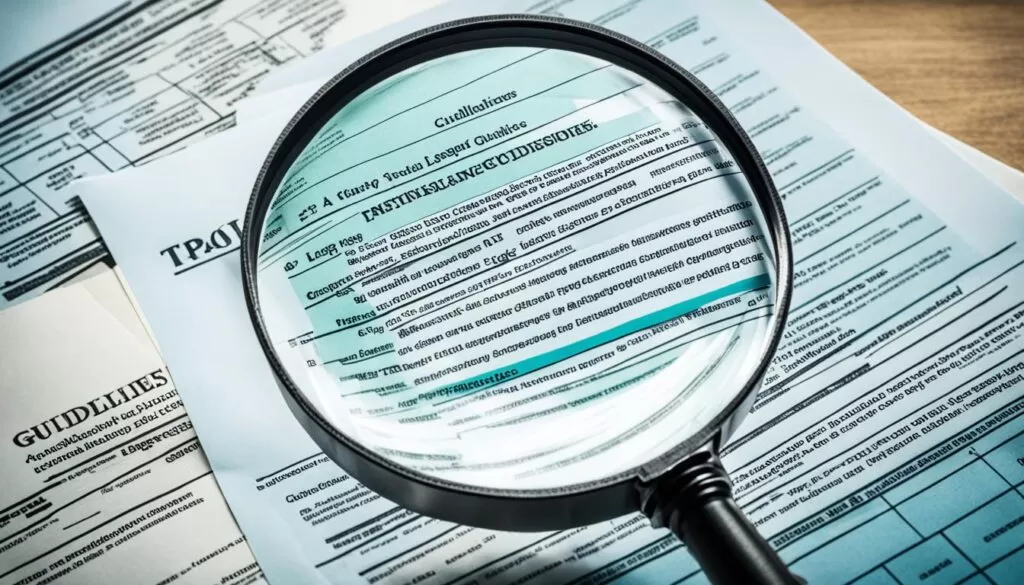In 2024, UK courts will see big changes. The new Judicial College Guidelines published in April show a +22% jump in the value of injury claims. This update, the first since 2022, is reshaping legal standards. It could change how personal injury payments work in the UK1. These rules are key for deciding on injury claim payments. They now include updated amounts for physical and sexual abuse victims2.
The 17th edition shows how inflation has pushed compensation amounts up. The Retail Price Index (RPI) rose by +22% when these guidelines were drafted. On the other hand, the Consumer Price Index (CPI) went up +17% in the same time. This shows the careful thought behind these updates2.
In England & Wales, these guidelines are very important for justice. But, legal experts in Scotland and Northern Ireland have to work with different rules. This makes sure that injury compensations are fair across the UK2.
The 2024 edition of the Judicial College Guidelines marks a big step. It brings injury and compensation updates in line with today’s economy. This shows the UK’s dedication to making sure its legal system is fair and accurate2.
In UK civil litigation, both the Retail Price Index (RPI) and the Consumer Price Index (CPI) are key. Their changes greatly impact compensation for personal injury claims. Recently, the RPI rose to 13.4% per year, showing the nation’s inflation pressures3. This rise affects how much money people get for their injuries.
Understanding how these indexes set the payment amounts is vital. It impacts the amount of money given to those injured.
RPI has been crucial for adjusting compensation as living costs change. It went up by 19.0% from September 2021 to March 20233. This increase changes the base amount for injury settlements.
Recently, there’s been talk of raising injury compensation by 12%3. Since money’s value has dropped since April 2022, updating compensation is necessary. This helps keep the system fair and effective.
While RPI focuses on one aspect, CPI gives a wider view of inflation4. Both are important for making legal decisions. These decisions consider many factors, including social changes and medical advancements4.
The relationship among RPI, CPI, and claim inflation is complex. It needs careful review4. Insurance reactions show the significant impact of these indexes. These include how they cope with new kinds of claims like PTSD4.
| Index
|
Role in Injury Claims | Impact on Compensation Brackets | Associated Economic/ Social Influences |
|---|---|---|---|
| RPI
|
Traditional measure for inflationary adjustment | Direct influence on settlement value adjustments | Cost of living, material, labour costs |
| CPI
|
Alternative measure reflecting comprehensive economic trends | Offers nuanced perspective for judicial decisions | Broader economic variables and social trends |
Dealing with economic challenges, adjusting for inflation in injury claims is key. Using RPI and CPI correctly is not just about numbers. It’s about fair outcomes in personal injury law.

For those dealing with personal injury claims, the 17th Edition of the Judicial College Guidelines (JCG) is crucial. It introduces key updates, especially on how whiplash claims are handled due to the Civil Liability Act 2018. The guidelines set a fixed amount for minor neck and back injuries5. This aims to fairly judge the pain and suffering of victims.
The 17th Edition requires that the whiplash compensation is reviewed every three years by the Lord Chancellor. The next review is due by 31 May 20245. It covers different payout rates depending on how long the injury lasts and includes minor psychological damage. Injuries over nine months used to get around £2,600 but are now looked at more closely5. There’s also a chance for an extra 20% payout in special cases5. For serious cases lasting over two years, the standard rules don’t apply, showing a change in approach towards long-lasting injuries5.
The updates in the 17th Edition also focus on improving legal knowledge among judges. It outlines essential training for handling cases in civil, criminal, and family law. There are various workshops for judges, from beginners to High Court Judges6. It shows how the guidelines help develop judicial skills over time. Special courses on leadership also reflect the judiciary’s growing roles6.
The changes bring a dual benefit: better guidelines for injury cases and stronger legal training. These updates standardise how claims are processed and boost judicial knowledge. Thus, the 17th Edition of the JCG supports fair compensation and legal excellence6.
Recent changes in the Judicial College Guidelines affect personal injury victims deeply. These changes mean victims might get more money, especially those with serious injuries as opposed to minor injuries. It’s important to look at what this means not just for victims but for lawyers and the legal system too.
The inflationary increase in compensation is both good and bad. It means more money for those with serious injuries, which helps them cover long-term costs. But, for minor injuries, while it might seem good at first, it could cause problems. There’s a worry that too many small claims could make insurance companies very picky, leading to longer court cases.
Lawyers now face a big challenge with these compensation changes. They have to adjust how they value claims to fit the new rules, making sure their clients’ claims are strong. Also, with more people likely to claim, law firms will have to handle more work but keep their service quality high.
The rise in compensation affects how claims are valued, which is key to court processes. As the amount of money at stake goes up, cases previously considered small may now need more complex handling. Lawyers will have to be very skilled to
| Claim Type | Pre-Guideline Valuation (£) | Post-Guideline Valuation (£) | Court Track |
|---|---|---|---|
| Minor Injury | 1,000 | 1,500 | Small Claims |
| Severe Injury | 25,000 | 40,000 | Fast Track |
| Catastrophic Injury | 90,000 | 140,000 | Multi-Track |
Injury compensation claims evolve with the economy and legal changes. Adjusting compensation for inflation is crucial. This section looks at how these adjustments affect recent awards. It also talks about the importance of using the RPI as an inflation index.

Analysing Adjustments for Inflation in Recent Awards and Settlements
Changes in compensation claims got a boost on 6th March 2021. This was when guidelines for consistency in claims were endorsed7. The Retail Price Index rose by 6.56%, showing the economic changes8. This increase helps claimants get fair settlements.
The legal framework is changing with updates to the Ogden Tables. As of 22nd March 2022, Northern Ireland saw a rate adjustment9. This helps calculate fair damages. New tables now offer a detailed way to assess damages up to age 1259.
Choosing RPI for inflation adjustments is wise. It matches the diverse injuries in the Guidelines. Even very serious injuries are considered. The use of RPI makes settlements more transparent and fair7.
| Injury Type | Range of General Damages (£) | Comments |
|---|---|---|
| Head Injury (Most Severe) | £324,600 to £403,990 | Accommodates recent RPI adjustment |
| Total Blindness and Deafness | Approx. £403,990 | Reflects consistent valuation with catastrophic injuries |
| Minor Injuries (Full Recovery <7 Days) | Up to £690 | Aligned with lowest injury compensation threshold |
| Work-Related Cold Injury | Approx. £15,000 | Accounts for workplace adjustments and warm clothing as mitigating factors |
| Chronic Pain & Psychological Symptoms | Approx. £32,500 | Considers acute sequelae and joint issues |
This detailed view on RPI and awards shows the need for transparency. It ensures fair settlements. It also meets the economy’s and claimants’ needs.
The way legal systems protect victims of abuse has been getting better over time. The Youth and Criminal Justice Act of 1999 was a big step in helping vulnerable witnesses in courts10. But, by 2014/15, it was clear that family law needed to catch up to criminal law in this area. This concern was pointed out by the President of the Family Division10.
In 2017, the Family Procedure Rules were updated to better protect vulnerable people in court. This showed the courts’ commitment to helping victims of abuse10. Also, since 1999, Civil Procedure Rules have allowed for flexible ways to assist and protect people in court, similar to methods used in both criminal and family courts10. A detailed 155-page document on the new guidelines for compensation shows the improvements made in these standards10.
In 2021, the Domestic Abuse Act was introduced, changing how injury claims will be handled from 202411. This act considers domestic abuse a very important issue and plans to further this effort in 2022 and 202311. While it doesn’t create a new crime, it covers many behaviours that might be offenses. It focuses on better protection and raising awareness for victims of abuse11.
The act brings in a new definition to help everyone understand and change how domestic abuse is seen11. It says domestic abuse can happen if the victim and abuser are over 16 and know each other well. This new rule includes different types of relationships, like those who were married or are parents to the same child11. It says you don’t need to live with someone to be considered a victim of domestic abuse11. The Crown Prosecution Service (CPS) Case Management System now highlights all domestic abuse cases11.
In the end, our courts have changed to better meet the needs of victims of abuse. The new guidelines bring hope for better compensation and support. The detailed 155-page document shows a big change in how these cases are handled in the UK.
The Judicial College Guidelines are key within the UK legal system, touching on personal injury law. They take into account the UK’s complex structure, which includes England & Wales, Scotland, and Northern Ireland. Because legal traditions and laws differ across these areas, it’s key to understand how these guidelines work within the UK’s legal tapestry.
In England & Wales, legal practices are closely linked with the guidelines. The Whiplash reforms, introduced on 31 May 202112, have brought big changes. They’ve altered the handling and compensation for minor motor accident injuries. While Scotland and Northern Ireland have their own legal systems, they often see the guidelines as guiding while adapting them to meet their own needs.
Scotland needs to make careful changes to apply the guidelines. With unique legal traditions and injury law systems, Scotland’s approach can differ from the Judicial College’s advice. The Civil Liability Act 201813, aimed at reducing motor insurance costs in the UK, may be applied differently here due to unique court procedures and interpretations.
Personal injury law in Northern Ireland also differs from that in England and Wales. Though the Civil Liability Act 201813 reaches Northern Ireland, adjustments respect their distinct legal system. Local case law and legislative changes further shape personal injury law’s unique character in the region.
In showing the UK’s varied but shared legal setups, the Personal Injury Working Group has played a key role. Including members from organisations like DWF, the APIL, and the NHS, it aims for reforms that speed up and fair up solutions for rightful claims across the UK.14 These reforms look at regional needs while sticking to UK-wide legal principles.
Personal injury law grows through court decisions, especially with sexual abuse damages. Recent cases guide the update of guidelines. They make sure the general damages valuation reflects today’s legal and ethical standards. This change is sparked by key Supreme Court rulings. They affect mixed injury claims in the OIC Portal, leading to a more detailed view in injury law.
Latest court decisions have changed how we value damages in sexual abuse cases. Now, judges recognize the huge effect on victims’ lives. This recognition has changed how much money victims get.
Court decisions can change how we view general damages. These decisions create new standards that fit with what people think is fair. In dealing with emotional harm, the court respects everyone’s dignity15.
The Supreme Court’s views on mixed injury claims within the OIC Portal have changed how we handle injury compensation. Their rulings distinguish between physical and mental harm. This ensures fair payment for people with different types of injuries from the same event.
| Case Name | Year | Impact on Damages Assessment |
|---|---|---|
| Case A | 2021 | Increased damages for psychological injury |
| Case B | 2022 | Refined approach to mixed injury claims |
In 2024, several important changes will affect personal injury claims. One big change is the 17th edition of the Judicial College Guidelines. This edition was published in April 2024, following a big update in 20221. It includes new categories for claimable injuries, such as sexual abuse and limb disorders related to work1. These guidelines mean that people can now claim more money for their injuries. The amount has gone up by about 22%1. Judges need to keep this in mind when deciding how much money someone should get7.
Now, minor foot and moderate ankle injuries are worth more money, £16,770 and £32,450 respectively1. Severe injuries that change someone’s life dramatically, like paralysis or serious head injuries, could get around €550,0007. These changes show that the UK courts want to judge claims more fairly and give proper compensation.
The whiplash reforms from May 2021 also bring changes. These reforms ensure that payout amounts keep up with inflation. This directive comes from the highest judicial figure, the Lord Chief Justice12. Insurers have to tell the Financial Conduct Authority how they’ve passed on these savings to customers. They have until 1 October 2023 to report this12. The Civil Liability Act also plays a part. It requires that these tariffs be reviewed at least every three years. This means the field of personal injury is always changing, affecting both lawyers and those making claims.
If you need help and advice with a potential case for injury compensation, contact us now. MRH Solicitors are waiting to assist you.
